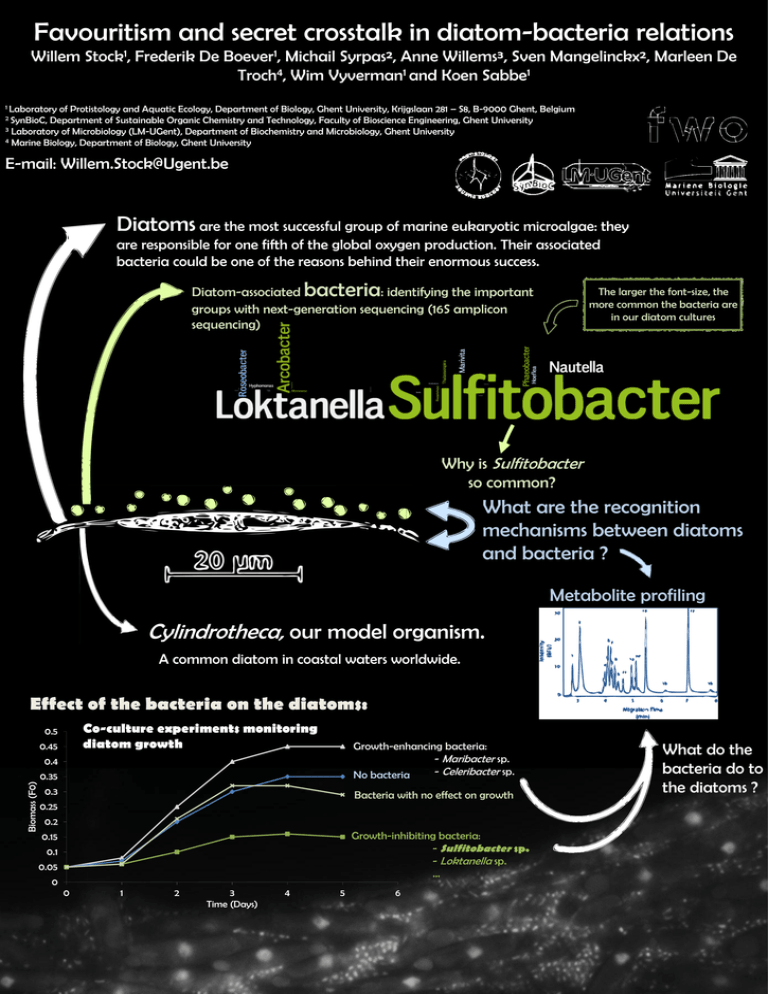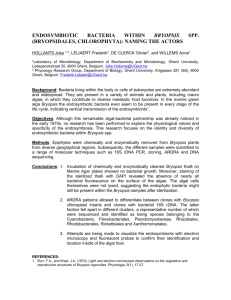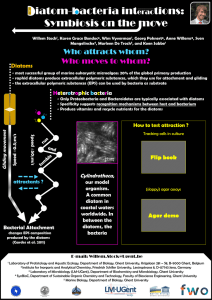Favouritism and secret crosstalk in diatom-bacteria relations
advertisement

Favouritism and secret crosstalk in diatom-bacteria relations Willem 1 Stock , Frederik De 1 Boever , Michail Syrpas², Anne Willems³, Sven Mangelinckx², Marleen De 4 1 1 Troch , Wim Vyverman and Koen Sabbe 1 Laboratory of Protistology and Aquatic Ecology, Department of Biology, Ghent University, Krijgslaan 281 – S8, B-9000 Ghent, Belgium 2 SynBioC, Department of Sustainable Organic Chemistry and Technology, Faculty of Bioscience Engineering, Ghent University 3 Laboratory of Microbiology (LM-UGent), Department of Biochemistry and Microbiology, Ghent University 4 Marine Biology, Department of Biology, Ghent University E-mail: Willem.Stock@Ugent.be Diatoms are the most successful group of marine eukaryotic microalgae: they are responsible for one fifth of the global oxygen production. Their associated bacteria could be one of the reasons behind their enormous success. Diatom-associated bacteria: identifying the important groups with next-generation sequencing (16S amplicon sequencing) The larger the font-size, the more common the bacteria are in our diatom cultures Why is Sulfitobacter so common? What are the recognition mechanisms between diatoms and bacteria ? Metabolite profiling Cylindrotheca, our model organism. A common diatom in coastal waters worldwide. Effect of the bacteria on the diatoms: Co-culture experiments monitoring diatom growth 0.5 0.35 Growth-enhancing bacteria: - Maribacter sp. - Celeribacter sp. No bacteria 0.3 Bacteria with no effect on growth 0.45 Biomass (F0) 0.4 0.25 0.2 Growth-inhibiting bacteria: - Sulfitobacter sp. - Loktanella sp. … 0.15 0.1 0.05 0 0 1 2 3 Time (Days) 4 5 6 What do the bacteria do to the diatoms ?



